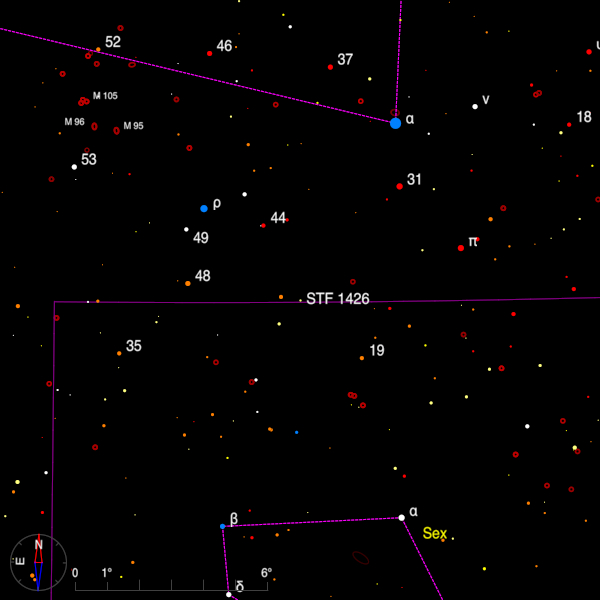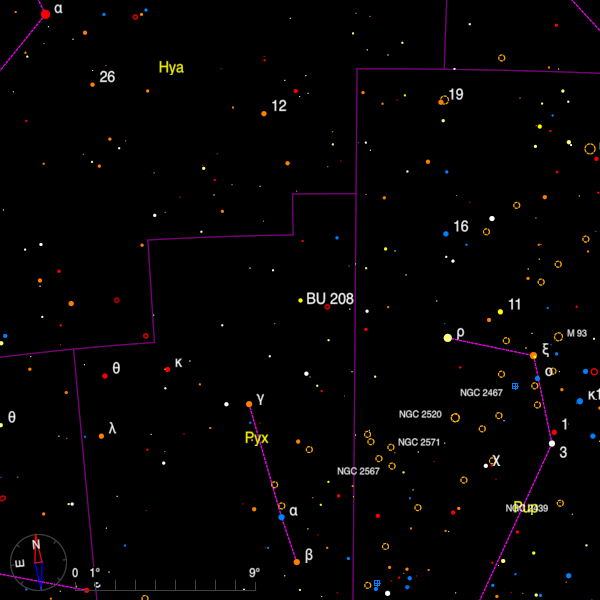March 2021 - Double Star of the Month
STF 1426 (10 20 32.32 +06 25 47.6) is a long period binary located about six degrees south-south-east of Regulus. More specifically it is about 45' preceding the 6.1 magnitude star 43 Leo.

It is also a triple with the C component (magnitude 9.4) having been first found by Herschel in 1782. The stars are magnitudes 8.0 and 8.3 and the current position is 317 degrees and 0".9, so 15-cm is needed to see them clearly divided. The stars have moved prograde by 60 degrees and widened from 0".6 since discovery. The C star is a relatively easy object for the small aperture and is currently at 9 degrees and 8", and Asaph Hall added a magnitude 12.6 with the Washington 26-inch which is currently at 41 degrees, 39".
The catalogue orbit for AB gives a period of 2209 years and predicts that the stars will now slowly close reaching 0".6 around 2175. One degree south-east is the wide and unequal optical pair SHJ 115, the primary of which has the significant proper motion of 0".25 per year and a distance of 190.6 light-years.
The pair chosen for the southern part of this column offers a real challenge to observers. BU 208 (08 39 07.90 -22 39 42.8) was one of the pairs which S. W. Burnham found with his famed 6-inch Clark refractor.

When discovered the pair was 1".3 apart but later obserations saw the stars close to 0".25 and the period was recently found to be 123 years. The stars have magnitudes 5.4 and 6.8 and in early 2021 they can be found at 77 degrees and 0".34, but they are closing so any plan to resolve them would benefit from an early attempt!
Gaia EDR3 shows a parallax for the system as a whole which converts to a distance of 64 light-years, and its considerable annual proper motion of half an arc-second per year is continuing to widen the distance to a field star of magnitude 11.4 currently 121" away.
In addition to reports of the spectroscopic binary nature of the A star, the Washington Double Star Catalog (WDS) also contains a note on another component which has an H magnitude, of 13.7 at a distance of 7".5. It was noted whilst using the Subaru telescope on Mauna Kea to look for debris disks and planetary bodies. The authors noted it was near the edge of the detector and they do not give much weight to it.
Bob Argyle - Double Star Section Director